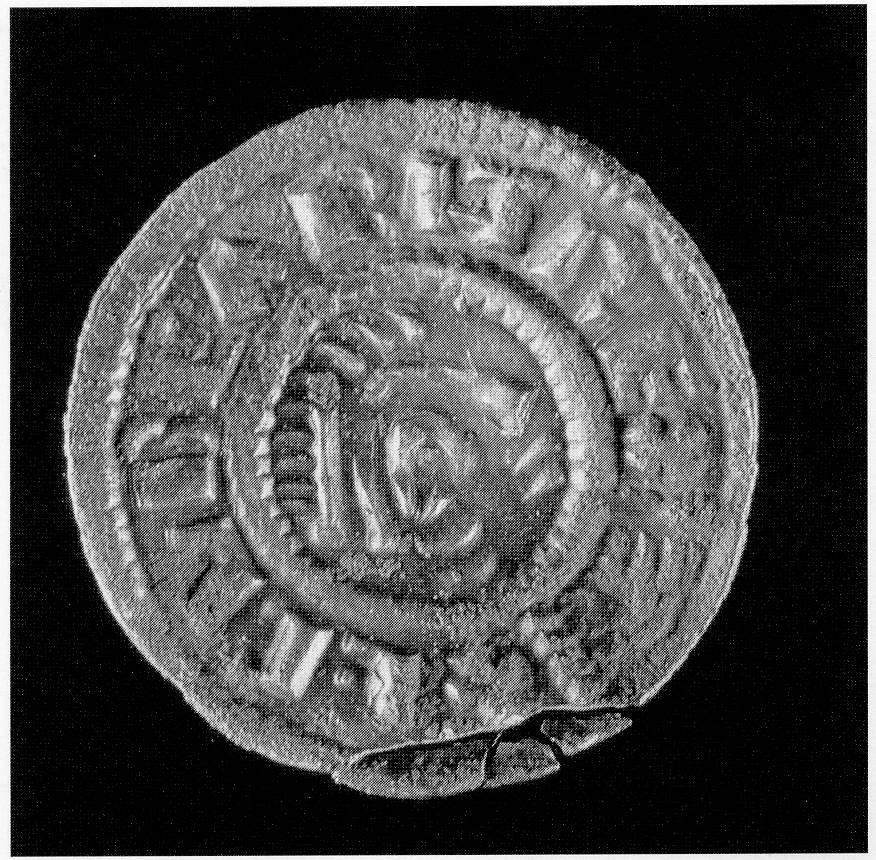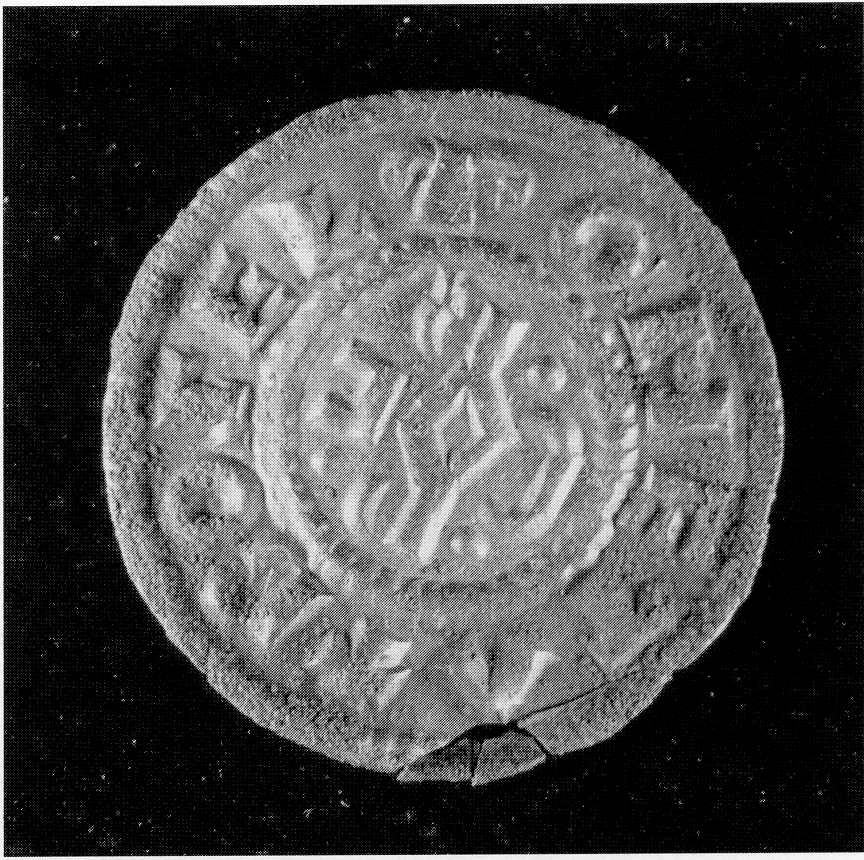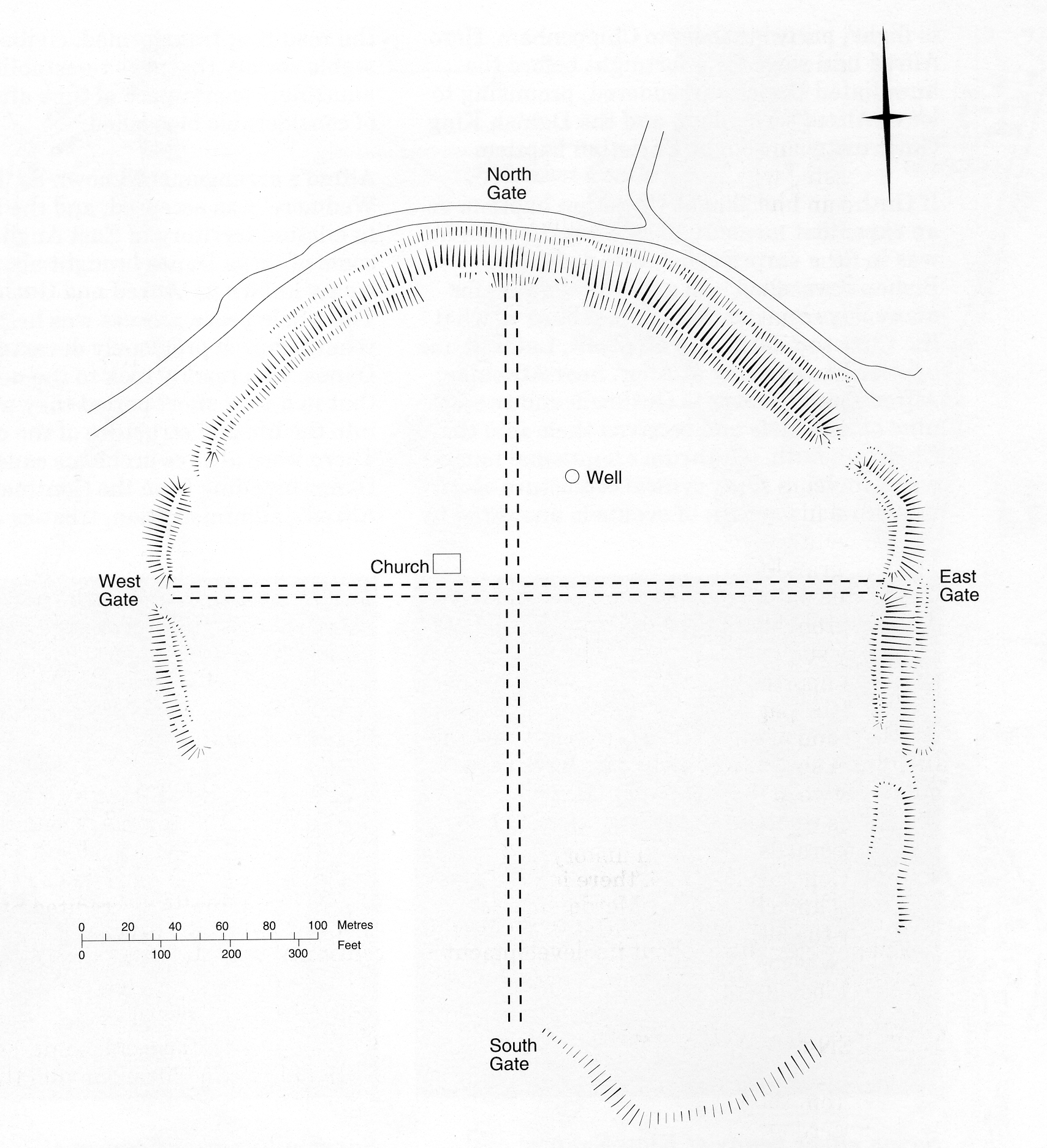The Saxon Period
Exactly when the Saxons came to Merdon is unknown, probably around the year 500, but their coming raises the fascinating question: Was it the then displaced Celts who settled and created Hursley, or was it the later Saxons, ousted by the Normans when the castle was built, who caused Hursley to come into existence?
From the Anglo-Saxon Chronicles in the year 634, a story starts that had a profound effect on Merdon, Wessex and ultimately all of southern England. The Italian missionary Birinus of Lombardy and his team landed at Portchester with a commission from Pope Honorius to carry the Gospel of the ‘White Christ where before it had not hitherto penetrated’, and the Odin (Woden) worshipping West Saxons were a natural starting point. Birinus must have been a little surprised to find evidences of Christianity still extant, with small church buildings in many places, as a Celtic-Roman legacy among the conquered serfs of their Saxon masters. But this was a relatively dormant Church, into which Birinus was sent independent of Canterbury to inject new life and commitment, and counter the apathy of the Archbishop and the very real threat of total anarchy and havoc already experienced from pagan forces.
Cynegils, king of the Gewissas, a principal tribe of the West Saxons, became aware of but kept well away from Birinus and his team.
The king, already with problems from the frequent wars and skirmishes with the neighbouring tribes, did not wish to invite yet more trouble by upsetting Odin through associating with anyone who appeared to be as weak and foolish as Birinus. Also, had not his daughter’s conversion to Christianity added to his misfortune? It was known that Birinus often travelled with few companions, and lit just one campfire at night unlike ‘sensible’ travellers who, with more companions, lit many campfires to appear as a much larger force to deter opportunist attacks. When Birinus was challenged about his apparent folly, his reply was that he only had one light in his life, and his one fire represented that one light - Jesus Christ — and his experience and survival had proved the sufficiency of that one light.
As the year progressed the Church under Birinus prospered, but the lot of Cynegils did not, despite invoking Odin’s help. Life was perilous and uncertain, with crops and homes under constant threat of pillage and burning, yet amidst this mayhem there was Birinus successfully building up the Church. Eventually the two men met; how or where is not known, but their meeting had a dramatic effect on both Cynegils and eventually the whole country. Cynegils accepted the new faith with its changes so diametrically opposite to his old life style, and peace came to the warring tribes, creating the stable society that was to be such a blessing to Alfred the Great two and a half centuries later.
For the year 635, the Anglo Saxon Chronicles record the conversion to Christianity of Cynegils, and Birinus baptising him. As a testimony of his new faith in Jesus Christ, Cynegils gave the heart of his kingdom to God with his gift of lands to the Bishop and Church in Winchester just over a year later. This grant included all the lands within a seven mile radius circle of Winchester. The indirect result was that the Bishop and Church in Winchester had such political and monetary strength, that Winchester became the richest bishopric in all England. The See’s influence extended and increased far beyond the present boundaries of Hampshire, evidenced by the many ‘Domum Deeds’ and place names that still exist today. (Domum - Latin for home).
From this grant in 637, the ownership of these fertile lands remained with the See of Winchester for 915 years, influencing both the size and character of the city to the present day. This seven-mile radius of Winchester took in Hursley Park, and the Anglo-Saxon Chronicles provide the earliest reference to this area. Of the various Anglo- Saxon charters, Merdon is only found in one relating to Chilcombe. This is a list of lands taxed with Chilcombe, which is known only from a 12th century transcript in a register of St Swithun’s Priory in Winchester.
In spite of the sound foundation for a Christian society laid down by Birinus and Cynegils, lapses occurred by a later king and others. The Chronicles for the year 757 record how Cynewulf, the West Saxon king, was caught in a ‘bower’ with his mistress at Merantun (Merdon), and was murdered by Cyneheard, brother of Sigeberht, who had been deposed by Cynewulf. Cynewulf is interred in Winchester Cathedral in one of the mortuary chests on the lintels of the side- screens in the chancel. Except for this brief mention of a saga of Saxon power struggles, we have no other information about this Saxon fort, manor and Village. As with Iron- Age archaeological remains, subsequent development of this site will also have obliterated nearly all Saxon remains. The next reference to Merdon relates to the invasion by the Danes over a hundred years later, which tested the cohesion of Saxon society under the leadership of Alfred the Great.
Due to time—wrought spelling modifications from Saxon times, there is sometimes doubt over the origins of current place names, as occasionally a Saxon name could fit more than one present day place name, but Merdon seems to fit best these situations on current evidence.
In 871, two months after the Danes had been victorious at Basing, King Ethelred and his brother Alfred were in battle with them at Merdon, and after a sway of fortunes the Danes held the place of slaughter. There were many battles with the Danes around Winchester resulting in much bloodshed and loss of life. One such battle is believed to have taken place at or near what is now Jermyn’s Lane at Ampfield, where a culvert passes under the road, about 0.6 miles (1 km) beyond Outwood Lodge in Hursley Park, on the south-western side. This now innocuous place has the name ‘Bloody Bridge’ as a reminder of the gruesome past.
 Saxon Garnet disk brooch.
Photo: Winchester City Museum Services.
Saxon Garnet disk brooch.
Photo: Winchester City Museum Services.
It is worth noting that the Saxons had suffered about a century of sporadic and bloody battles at the hands of the invading Danes, and England was in a very poor state, with the only hope of deliverance resting in the new King Alfred, who had succeeded to the monarchy after his three elder brothers had died. Over the winter of 878 Alfred took refuge at Athelney in Somerset, and by prayerful and careful planning, he secretly assembled an army and gained a decisive victory over the Danes at Edington in Wiltshire in the early summer of that year. In this battle everything that could go wrong for the Danes did, and Alfred’s forces ‘put them to flight’, pursuing them to Chippenham. Here Alfred laid siege for a fortnight before the humiliated Danes surrendered, promising to leave Alfred’s kingdom, and the Danish King Guthrum even sought Christian baptism.
If Guthrum had sought Christian baptism as an expedient measure to save his life then he was in for a surprise, for Alfred and his Bishop counselled him and his followers for many days leaving them no doubt as to What the Christian faith was all about. Later at one baptismal ceremony at Aller, near Athelney, Alfred stood sponsor to Guthrum and twenty nine of his chiefs and received them into the Christian faith. (Guthrum’s baptismal name was Athelstan.) Any cynical conjecture about this miraculous turn of events is answered by the resulting transformed, civilised, and stable society that was re-established in an amazingly short space of time after a century of considerable bloodshed.
 Saxon silver penny of King Eghbert
( diameter 2 cms, 0.8 ins)
Saxon silver penny of King Eghbert
( diameter 2 cms, 0.8 ins)
 Saxon silver penny (reverse)
Saxon silver penny (reverse)
Alfred’s arrangement known as ‘The Peace of Wedmore’ was accepted, and the Danes kept to allotted territory in East Anglia. A revolt by some of these Danes brought about a new treaty known as ‘Alfred and Guthrum’s Peace’. The whole peace process was helped by the rebuilt church previously devastated by the Danes, who readily took to the new faith, so that in a very short period they were absorbed into the life and structure of the country. There were always problems caused by other Danes invading from the Continent, but Alfred’s administration, treaties and much improved army and navy met the needs of these occasions.
 Remaining features of Saxon village of Merdon
Remaining features of Saxon village of Merdon
Alfred’s situation was similar to many Old Testament youngest sons, through whom God’s blessing was delivered. His military successes and his high standard of administration are well known, but it was by virtue of the fact that he followed God’s ways, not the ways of men, that England regained her strong social and spiritual position. It also later earned him the meritorious and unique title of ‘The Great’ which, had it been used in his lifetime, would have certainly caused him embarrassment.
In recent years several Saxon relics have been unearthed in the Park, and south of the house a silver penny minted in the reign of King Egberht, grand-father of King Alfred, was found. This dates from between 802 and 839, and was probably minted in Canterbury. Less than forty such pennies are known to exist. Another important find was a garnet disc brooch of the pagan period, found at the Ampfield end of the Park. From other parts of the Park a spear and shield boss have been found. Between the last Anglo-Saxon Chronicles reference to Merdon in 871, and up to the crossroads of English history, the Norman Conquest in 1066, there is a gap in references and clues about Merdon. In fact, except for the site, and very brief references to it, we know very little about its development or what it looked like during this period.